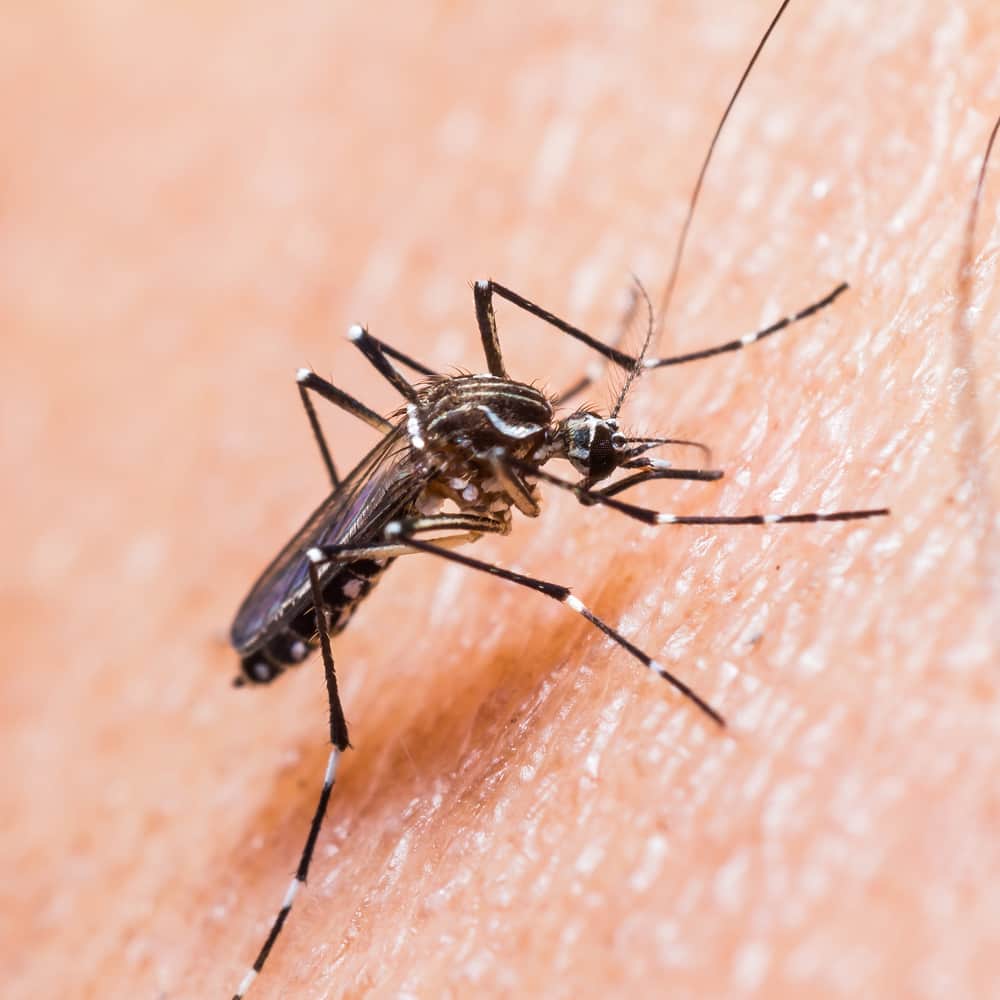
While extremely rare in the United States, yellow fever is a cause for concern in tropical and subtropical areas of Africa and South America. According to the World Health Organization (WHO), this mosquito-borne illness is found in 34 countries in Africa and 13 countries across Central and South America.
The disease has been around for thousands of years, but many people may be unfamiliar with its cause and symptoms. Learn more about yellow fever and how it is spread.
WHAT IS YELLOW FEVER?
Yellow fever is a viral hemorrhagic disease that is spread to humans through the bites of infected mosquitoes. Its name comes from the jaundice, or yellowing of the skin and eyes, that can occur in some patients.
The yellow fever virus is an RNA virus belonging to the same family as West Nile, St. Louis encephalitis and Japanese encephalitis. It is spread to humans primarily through the bites of mosquitoes belonging to the Aedes and Haemagogus species. Mosquitoes are typically exposed to the disease when they bite infected primates.
Aedes aegypti, or the yellow fever mosquito, is commonly found in the southern United States but lives in tropical and subtropical climates around the globe. Haemagogus mosquitoes are common in Central and South America.
The World Health Organization notes that there are three primary forms of yellow fever transmission:
-
Sylvatic (or jungle) – Monkeys in tropical rainforests are bitten by mosquitoes, which may then occasionally bite and infect humans.
-
Intermediate yellow fever – Common in Africa, this type of transmission occurs when mosquitoes that breed both in the wild and near households infect both humans and monkeys.
-
Urban yellow fever – This occurs when infected people introduce the virus into a population and mosquitoes transmit it from person to person.
YELLOW FEVER SYMPTOMS
According to the Centers for Disease Control and Prevention (CDC), most people with yellow fever will not develop any symptoms and will recover fully. In cases where symptoms are present, they typically appear following an incubation period of 3 to 6 days and may include:
-
Chills
-
Severe headache
-
Back pain
-
General body aches
-
Nausea
-
Vomiting
-
Fatigue
-
Weakness
A handful of patients, roughly 1 in 7, will develop severe illness characterized by:
-
High fever
-
Yellow skin (jaundice)
-
Bleeding
-
Shock
-
Organ failure
Severe yellow fever is fatal in about 30–60% of cases. The Centers for Disease Control and Prevention recommends that anyone who is traveling to areas where this disease is found and is experiencing these symptoms seek medical attention immediately.
YELLOW FEVER HISTORY
Scientists believe that yellow fever may have been around for as long as 3,000 years. The disease spread throughout the world with the growth of the slave trade. Infected slaves were bitten by mosquitoes, which then spread the disease, eventually introducing it into America.
There have been several yellow fever outbreaks throughout the course of history, including waves in New York, Boston and Charleston between 1668 and 1699. Most notably, the disease ravaged the city of New Orleans, with its proximity to water and hot, humid climate, between the years of 1839 and 1860, resulting in more than 26,000 cases.
The disease also wreaked havoc on workers during the building of the Panama Canal. By 1906, 85% of workers were hospitalized. Thousands had died.
Treatment
There is no medicine to cure yellow fever; however, a reliable vaccine has been around for more than 80 years. The vaccine contains a live, weakened strain of the virus and is appropriate for people over 9 months of age. It may even be required to enter certain countries. The vaccine is administered in a single dose and provides lifelong protection.
For patients diagnosed with the disease, the Centers for Disease Control and Prevention recommends rest, fluids and medications to relieve fever and aches. Severe yellow fever requires hospitalization.
MOSQUITO BITE PREVENTION
Vaccination of at-risk populations is the most effective method of helping to prevent yellow fever. You can also reduce your risk of being bitten by mosquitoes by limiting your exposure to them. Tips from the Centers for Disease Control and Prevention include:
-
Using a mosquito repellent recommended by the CDC
-
Wearing long sleeves and pants when outdoors
-
Avoiding outdoor activity during peak mosquito hours, typically dusk and dawn, although Aedes aegypti feeds during the day



